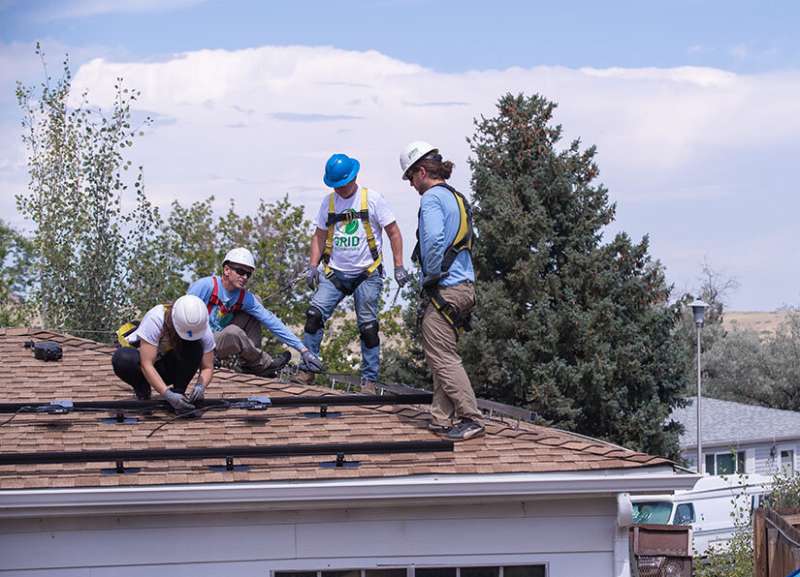With increased deployment of clean energy, a skilled workforce will be needed to install and maintain the equipment. Credit: Joe DelNero, NREL
Did you know there is potential for more than 1.6 million new jobs to be created across America by the year 2030 to help build the country's clean energy future?
Of those 1.6 million jobs, some of the highest rates of job growth can be expected to come from Alaska, Wyoming, and Nevada. The states of California, Florida, and Texas will have the most job potential overall due to higher working-age populations.
Insights such as those are now available through the State and Local Planning for Energy (SLOPE) Platform, a free online energy planning tool developed collaboratively between the U.S. Department of Energy and the National Renewable Energy Laboratory (NREL).
"SLOPE puts data right in the hands of decision makers," said SLOPE project lead Katie Richardson. "The insights and data from SLOPE can help planners make strategic, equitable choices to maximize opportunities in clean energy and energy efficiency. Communities want to capture locally the economic development benefits of investing in the energy transition all while striving toward sustainability goals."
NREL's world-class research is constantly being incorporated into its publicly available tools like SLOPE to improve and expand on tool capabilities, empowering decision makers at the city, county, and state levels to make informed choices.
The employment projections now available through SLOPE stem from NREL's 2021 report, State-Level Employment Projections for Four Clean Energy Technologies in 2025 and 2030, which calculates job growth potential in four key clean energy sectors: battery energy storage, solar, wind energy, and energy efficiency.
With support from the Department of Energy's State Energy Program, the report was developed to better understand how jobs might change over time.
"NREL was tasked to develop a simple and transparent method to estimate the size of the workforce needed to support modeled clean energy deployment scenarios. We were able to do this through engagement with DOE's State Energy Program and 48 state energy offices," explained Allison Moe, NREL researcher and co-author of the report. "The report provides both job-estimate numbers by state for each technology and also jobs multipliers, so that individual decision makers can tailor employment estimates to their specific deployment projections."
The report details projected job estimates for two modeled scenarios of clean energy deployment through 2030: a "business-as-usual" scenario and a more accelerated deployment scenario. These scenarios are based on a variety of economic assumptions, such as expected costs and deployment investments, and do not address prospective state or national clean energy goals or policies.
The report conclusions and methodology are also available through NREL's clean energy employment projection support page.
Through SLOPE, users can explore not only the job growth potential but also the potential opportunities for clean energy and energy efficiency measures right in their state, city, or county to make informed decisions and capitalize on opportunities that make the most sense for their areas.
NREL is continually striving to expand knowledge, data, and research to shift the clean energy transition into an even higher gear.
Explore the job growth potential data and much more through SLOPE's Data Viewer tool.
Provided by National Renewable Energy Laboratory
























